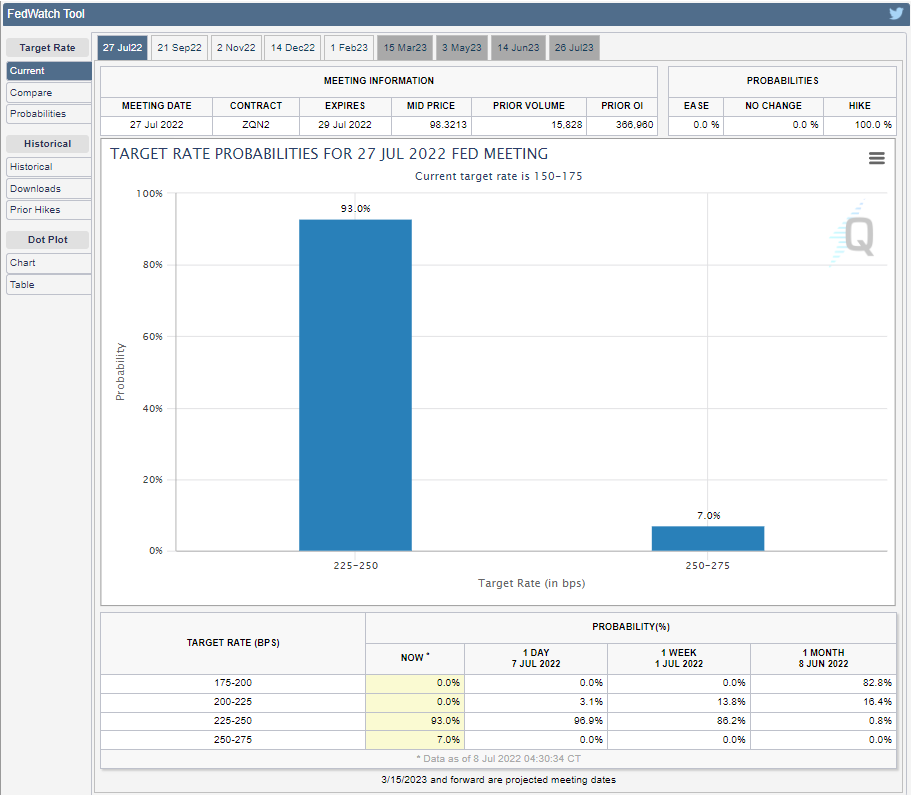- Nonfarm Payrolls add 372,000 in June, beating the 268,000 forecast. Unemployment rate remains at 3.6%.
- Average Hourly Earnings rise 5.1%, May revised up to 5.3%.
- Treasury yields rise, equities and the dollar are flat as recession fears fade.
American firms hired far more people than expected in June easing fears of an incipient recession, though the most popular GDP estimate remained negative in the second quarter.
Nonfarm Payrolls added 372,000 jobs, well ahead of the 268,000 consensus forecast from the Reuters Survey of analysts. Job creation has been trending down over the past year with the three-month moving average at 397,000 in June down from 580,000 in January and 564,000 last July.
The unemployment rate was unchanged at 3.6% as forecast, and the underemployment rate, which includes part-time workers who cannot find full-time jobs, dropped to 6.7% from 7.1% in May.
Unemployment rate
One reason job creation and the unemployment rate have stayed strong despite weak or non-existent economic growth comes from the household survey which calculates the unemployment rate. The labor force dropped by 353,000 workers and the participation rate fell to 62.2% in June from 62.3%. The combination of fewer people looking for jobs and a smaller percentage of available workers employed means a continuing labor shortage resulting in supply and product issues and continued upward pressure on wages as employers compete for scarce help.
Average Hourly Earnings, one of the three main compensation measures, rose 5.1% on the year, slightly better than the 5.0% prediction. The May result was revised to 5.3% from 5.2%. Earnings climbed 0.3% for the month as expected. Though the May adjustment was small, it demonstrated, like the participation rate, that the forces driving wage inflation, have not peaked. Markets will be watching at the end of the month for Personal Income and Real Disposable Income from the Bureau of Economic Analysis (BEA) for a gauge of inflation’s impact on consumer finances.
The Atlanta Fed GDPNow model, which has charted the economy’s potential descent into recession, improved after the NFP release. Estimated second quarter GDP rose to -1.2%, up from -1.9% on July 7 and -2.1% previously.
Markets
Markets were generally unmoved by the NFP report as results were mostly in line with expectations. Prior to the release there was speculation that the weak retail sales and real personal consumption expenditures numbers for May and the negative readings in manufacturing and services employment Purchasing Managers Indexes (PMI) were foretelling a poor payroll report.
The Dow closed down 46.40 points, -0.15% at 31,338.15 and the S&P 500 shed 3.24 points to 3,899.38, down 0.08%. The Nasdaq gained 13.96 points, 0.12% to finish at 11,635.31.
Treasury yields were stronger across the spectrum with all terms of two years or longer closing above 3.0%. The 2-10 Treasury spread remained inverted by 3.1 basis points.
Wall Street Journal
The dollar took a breather from its torrid recent gains, suffering small losses against the euro, sterling, Australian , New Zealand and Canadian dollars and posting minor increases versus the yen and the Swiss Franc.
West Texas intermediate (WTI) rose to $102.44, closing above $102.00 for the first time in four sessions. The North American crude standard has gained 4.9% since closing at $95.78 on Wednesday.
Another reason for the unexceptional market response to the NFP is that next week will see reports for consumer prices and retail sales in June, both have the potential for major market impact.
Job distribution
Education and health services jobs led the field with 96,000 new positions. Professional and business services added 74,000 employees followed by the leisure and hospitality sector with 67,000, health care, 57,000, and transportation and warehousing 36,000. Manufacturing employment rose 29,000, information technology added 25,000 and government jobs dropped 9,000.
Federal Reserve policy
The more than respectable job growth was a boon to the Fed, whose anti-inflation rate hikes could be curtailed or ended if the economy slips into recession or job creation crashes. June payrolls virtually guarantee a 75 basis point increase at the July 27 Federal Open Market Committee (FOMC) meeting. Treasury futures have the odds for a three-quarters of a point hike at 93.0%, with 7.0% favoring a full 1.0%.
Consumer inflation was 8.6% annually in May with core at 6.0%. The Personal Consumption Expenditures Price Index (PCE) registered 6.3% in the headline and 4.7% for the core in May.
Information on these pages contains forward-looking statements that involve risks and uncertainties. Markets and instruments profiled on this page are for informational purposes only and should not in any way come across as a recommendation to buy or sell in these assets. You should do your own thorough research before making any investment decisions. FXStreet does not in any way guarantee that this information is free from mistakes, errors, or material misstatements. It also does not guarantee that this information is of a timely nature. Investing in Open Markets involves a great deal of risk, including the loss of all or a portion of your investment, as well as emotional distress. All risks, losses and costs associated with investing, including total loss of principal, are your responsibility. The views and opinions expressed in this article are those of the authors and do not necessarily reflect the official policy or position of FXStreet nor its advertisers. The author will not be held responsible for information that is found at the end of links posted on this page.
If not otherwise explicitly mentioned in the body of the article, at the time of writing, the author has no position in any stock mentioned in this article and no business relationship with any company mentioned. The author has not received compensation for writing this article, other than from FXStreet.
FXStreet and the author do not provide personalized recommendations. The author makes no representations as to the accuracy, completeness, or suitability of this information. FXStreet and the author will not be liable for any errors, omissions or any losses, injuries or damages arising from this information and its display or use. Errors and omissions excepted.
The author and FXStreet are not registered investment advisors and nothing in this article is intended to be investment advice.
Recommended Content
Editors’ Picks

AUD/USD struggles near multi-month low; looks to US CPI for fresh impetus
AUD/USD languishes near a multi-month low during the Asian session on Wednesday and seems vulnerable amid a bullish USD. Expectations that inflationary import tariffs from US President-elect Donald Trump will push up prices and limit the scope for the Fed to cut rates remain supportive of elevated US bond yields.

USD/JPY sits near its highest level since July, close to 155.00 as traders await US CPI
USD/JPY stands firm near its highest level since July 30 amid speculations that a fragile minority government in Japan will make it difficult for the BoJ to tighten its monetary policy further. Moreover, fears that US President-elect Donald Trump might again hit Japan with protectionist trade measures continue to undermine the JPY.

Gold price oscillates around $2,600, just above a nearly two-month low ahead of US inflation
Gold price consolidates its recent heavy losses to the lowest level since September 20 as bears opt to pause for a breather ahead of the crucial US CPI report, which will influence Fed rate-cut expectations and provide a fresh impetus.

Ripple could rally 50% following renewed investor interest
Ripple's XRP rallied nearly 20% on Tuesday, defying the correction seen in Bitcoin and Ethereum as investors seem to be flocking toward the remittance-based token. XRP could rally nearly 50% if it sustains a firm close above the neckline resistance of an inverted head and shoulders pattern.
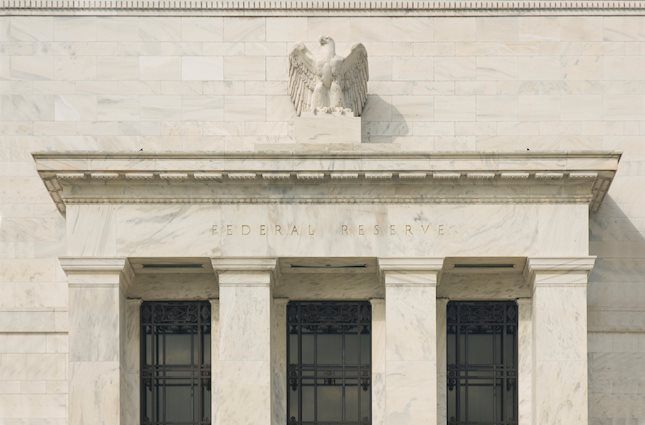
Five fundamentals: Fallout from the US election, inflation, and a timely speech from Powell stand out Premium
What a week – the US election lived up to their hype, at least when it comes to market volatility. There is no time to rest, with politics, geopolitics, and economic data promising more volatility ahead.

Best Forex Brokers with Low Spreads
VERIFIED Low spreads are crucial for reducing trading costs. Explore top Forex brokers offering competitive spreads and high leverage. Compare options for EUR/USD, GBP/USD, USD/JPY, and Gold.
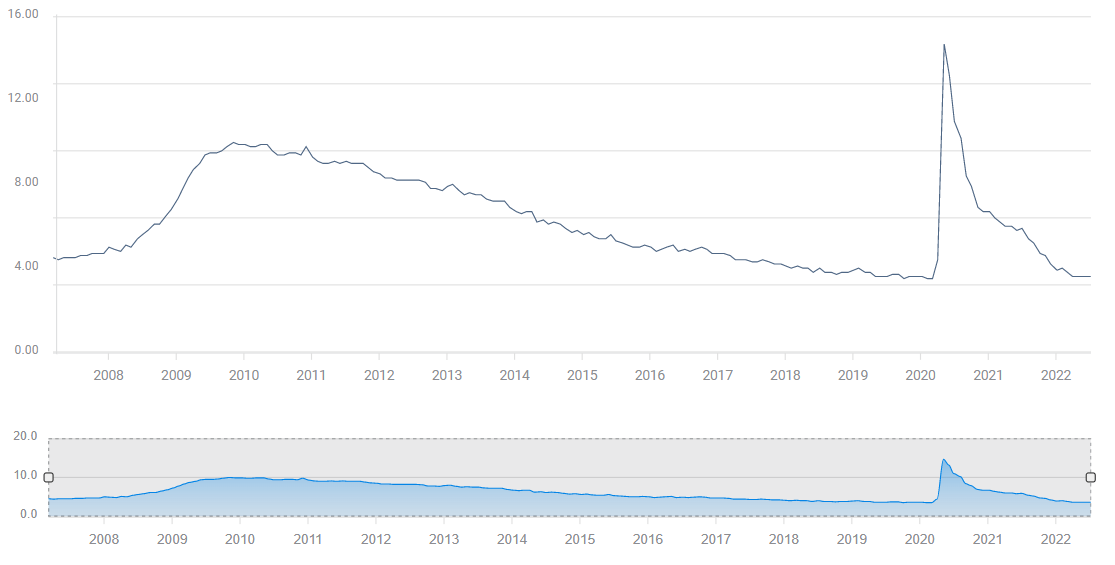
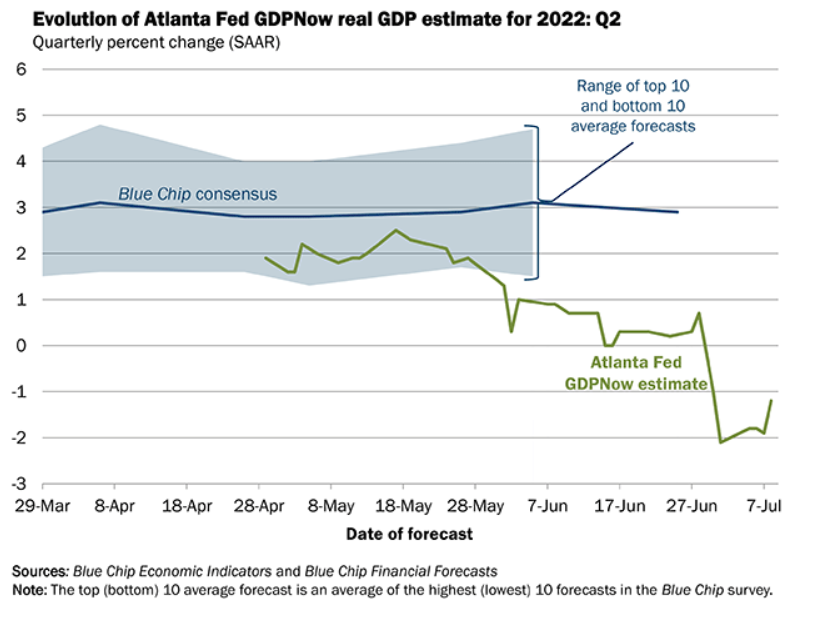
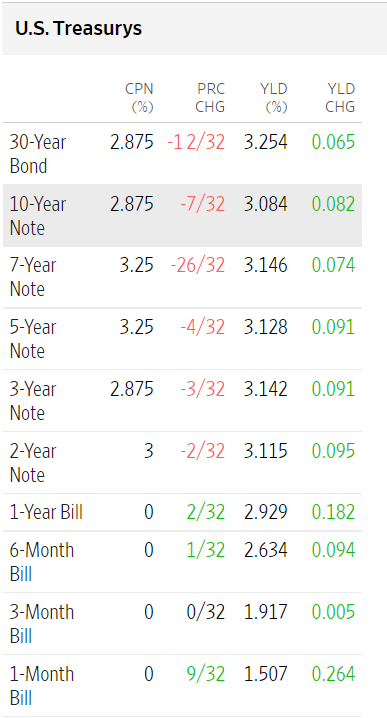
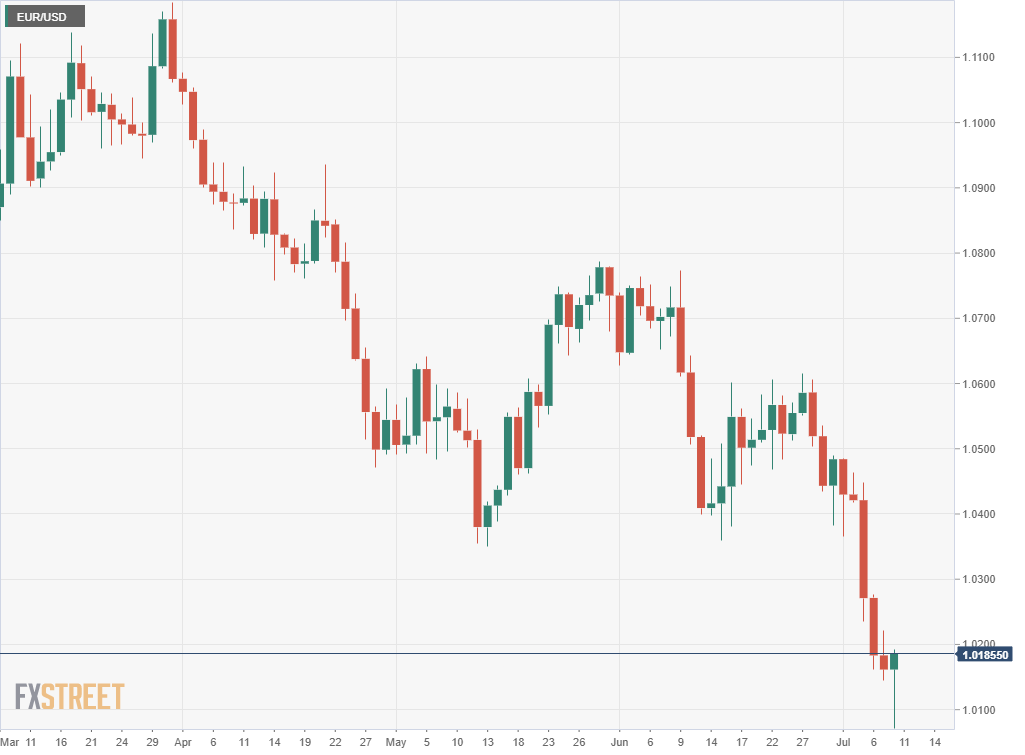
-637929140634115774.png)
